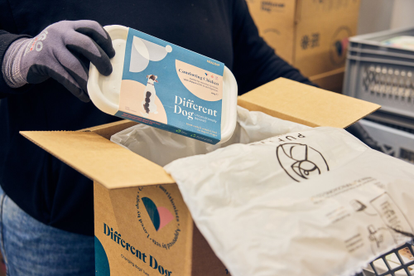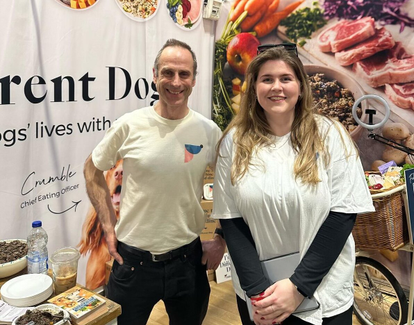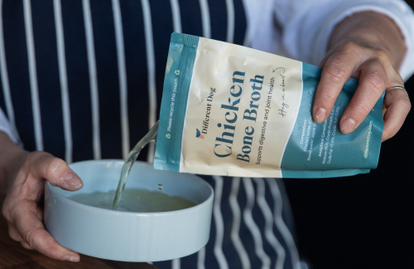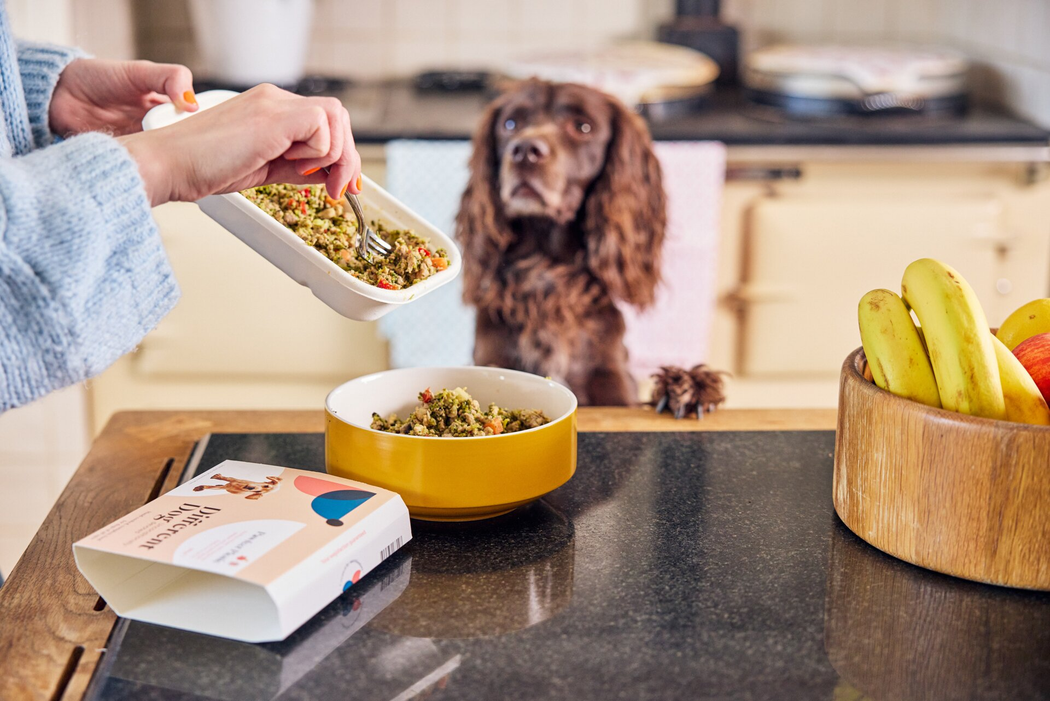

Why should I transition my dog onto new food gradually?
We talk about transitioning onto our recipes a lot, whether it’s in our Welcome Booklet, on our social media platforms, or in our online community, Devoted to Dogs. So, what does it mean? And why is a steady and gradual transition to a new diet important for our dogs?
We sat down with our in-house nutritionist, Bianca, to put together this handy article as the one-stop shop for everything related to transitioning to a new diet.
What is the gut microbiome?
Before we get into the food itself, it's important to understand what's going on inside your four-legged friend's body when a new diet is introduced. The gut microbiome is an ecosystem within the gut that influences your dog's ability to digest food, their metabolism, behaviour, and hormonal function, just to name a few. It's a community that can assist in the synthesis of vitamins as well as absorbing them from food, whilst also assisting in regulating the immune system. Quite often, owners are blissfully unaware that it's compromised. Our dog's gut microbiomes are constantly under assault. They're out in the grass with pesticides, walking on floors that we wash with chemicals, and then lick their fur! This is why it's so important to support their microbiome as much as possible to ensure a smooth transition onto a new diet. This can be done by taking your time when transitioning, only introducing a protein or two at the beginning, and transitioning with a probiotic.
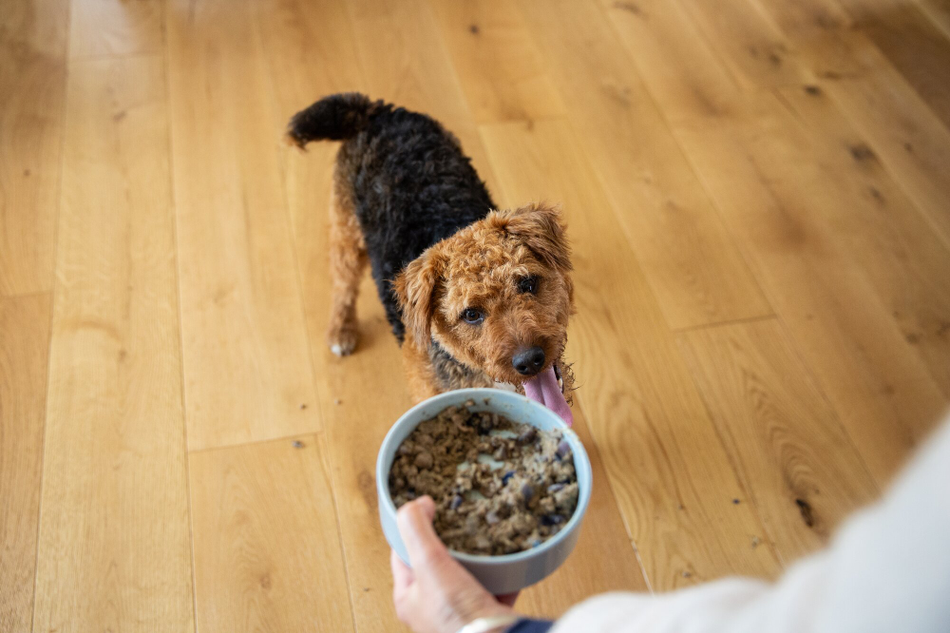
How should I transition my dog onto a new diet?
“There are no real negative effects from going slowly, but there can be some negative effects from going too quickly.”
Generally, we recommend a gradual transition over 7-10 days. We say “generally” because whilst every dog is different, most dogs can enjoy a smooth transition to our recipes within 10 days.
We suggest starting with 90% of your dog's current food, with 10% Different Dog. Each day, increase the percentage of Different Dog by 10% whilst decreasing their original food by 10% until you're feeding your full quota of Different Dog. If you’re feeding a partial diet, the percentages may differ. Our team can help you plan your dog’s transition, so get in touch if you’d like some guidance.
The simplest transition method is the “one spoon in, one spoon out” method. If you follow this method, simply take out one spoon of your dog’s existing food and replace it with a spoon of their new food. Each day, you'll increase the percentage of new food in their bowl.
It's important to know that every dog has a different microbiome, so their transition experience will be individual too, and some dogs need a little extra support.
How do I know if my dog needs a longer transition?
Bianca's top tip for knowing if your dog needs some extra support? Before you begin the switch to a new diet, take the time to look at your dog and assess how they're doing. How is their coat looking? Are they forming good stools? If your dog's coat is dull and their stools are loose, these can be indicators that there's some internal inflammation going on inside your dog. Even if your dog looks great on the outside, it's important to recognise signs that they might need a little extra support internally. So, always keep an eye on your dog when introducing a new diet.
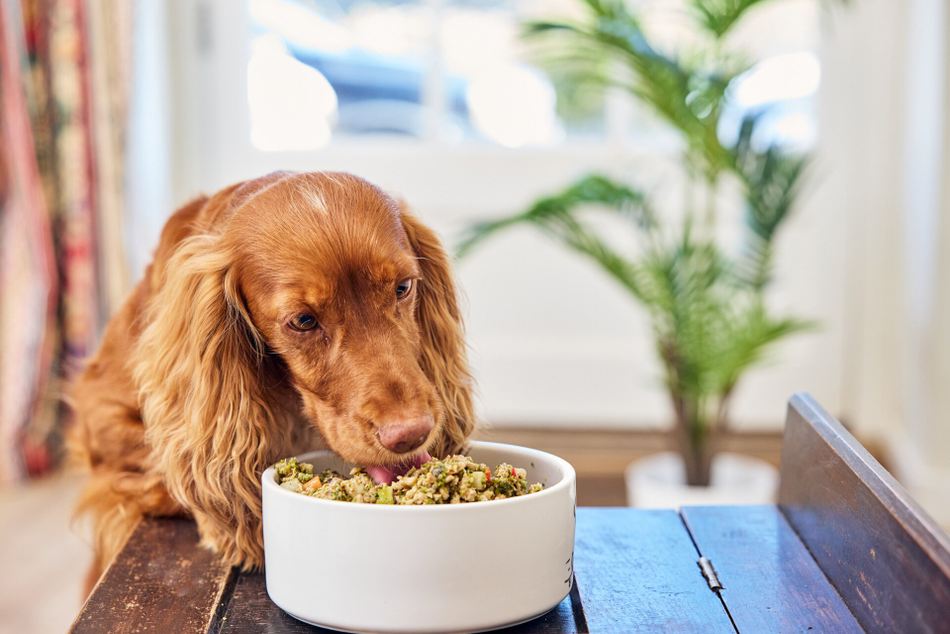
Does it take longer for an older dog to transition onto a new diet?
Oftentimes, we see puppies transition onto a new diet faster than older dogs because their microbiomes are new and constantly adapting. This is why it's very important to give puppies as much exposure to diversity from a young age. If your dog is older, you may find that they need some extra support when transitioning, especially if they haven't had much diversity in their microbiome. A lack of diversity in the microbiome can build a more unstable environment, which can make it more difficult for your golden oldie to digest certain proteins.
How many different proteins should my dog have in their diet?
Whilst it's really important to introduce variety into your dog's diet, it's also important to do it correctly. This means not overwhelming your dog's microbiome with too many new proteins all at once. Doing so can lead to certain, ahem, accidents on your carpet which we'd all rather avoid. Bianca recommends feeding one type of protein for a couple of weeks and then steadily introducing the next protein, especially if your dog is prone to a sensitive stomach. By doing so gradually, you can keep an eye on any reactions your dog is having to each protein.
What protein is best if my dog is allergic to poultry?
If you know your dog has an intolerance to a common protein, like chicken, we suggest trying one of our recipes with a novel protein, such as our Venison & Thyme or Pork Ragu recipes.
My dog is going off one of the proteins already. What can I do?
Sometimes, we see dogs go off certain proteins very quickly, and it can lead owners to think they simply don't like the food. What may be happening is some gut inflammation within your dog. When your dog has gut inflammation, they'll want to switch up their proteins as they're craving certain nutrients that their gut is unable to absorb. So, if your dog goes off yet another protein, don't panic. Get in touch with the team so we can support you.
What should I expect to see when I transition my dog onto a new diet?
When you transition your dog onto a new diet, your dog may need to go through the detox process. This can depend on the diet your dog was on previously and the general health of your dog, so like many things, it's individual to your dog.
Dogs detox through their orifices, so you may see gunky eyes and some mucus on their stools. Sometimes, owners will see these symptoms and assume their new diet just isn't right for them, but it's actually your dog's system clearing itself out from potential toxins, pesticides, and preservatives that have made their way into their body previously.
The detox process can take anywhere between one and three months, again depending on the state that your dog has come from. If you're coming from kibble, there will be a level of systemic inflammation within your dog's body, so don't be alarmed if you see these symptoms. However, you're not necessarily off the hook if you're moving from one fresh food to another, as some fresh food brands contain high levels of legumes which can cause some inflammation in your dog.
Can using a topper such as goat’s milk powder help my dog's transition?
Introducing a nutritious topper can be a great way to provide some extra support and nutrients to your dog whilst transitioning, but also encourage fussy pups to try their new food. Bianca recommends goat's milk powder as an easy-to-use and beneficial topper for your dog's dinner. Our goat's milk powder, The GOAT, can be sprinkled on top of your dog's favourite recipe for digestive and immune-boosting support.
Exercise Requirements
- Daily Walks: Aim for at least 90 minutes of walking every day, split into two walks if possible.
- Playtime: Engage in play sessions that include fetch, tug-of-war, or agility activities to keep them mentally and physically stimulated.
- Swimming: Many Golden Retrievers love water, so swimming is an excellent form of low-impact exercise for them if you have access to a safe body of water.
Where can I find more support on transitioning my dog?
As a team of dog owners, we know how nerve-wracking changing your dog’s diet can be, but don’t worry. We’ve helped many owners and their dogs transition onto a new, freshly cooked diet, and our knowledgeable team is here to help every step of the way. Our in-house nutritionist, Bianca, is on hand to offer professional guidance on transitioning your dog onto a new diet. Get in touch with our friendly Customer Delight team at feedme@differentdog.com and we'll organise a time for you to get the help you need.
You may also be interested in
